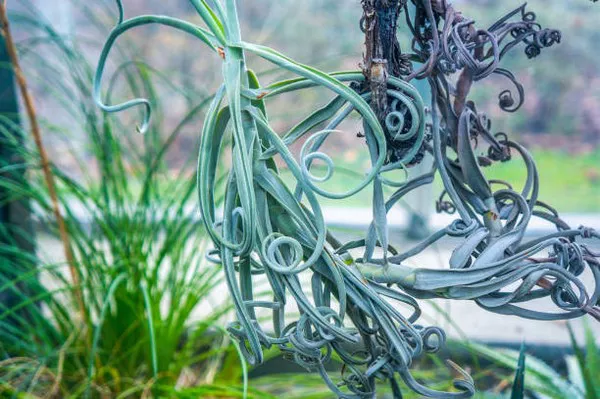Air plants, scientifically known as Tillandsia, have captured the imagination of plant enthusiasts with their unique ability to thrive without soil. These captivating plants belong to the Bromeliad family and are renowned for their resilience and adaptability. In this article, we delve into the intricate details of how air plants grow, shedding light on the environmental factors, life cycle, and care requirements that contribute to their flourishing existence.
Habitat and Natural Growth Conditions
Air plants are primarily native to the tropical and subtropical regions of the Americas, spanning from the southern United States to South America. Their natural habitats include forests, deserts, and mountains, where they cling to trees, rocks, and other surfaces. This epiphytic nature allows air plants to extract nutrients and moisture from the air and rain, making soil unnecessary for their growth.
Air plants have evolved specialized trichomes, tiny hair-like structures on their leaves, which enable them to absorb water and nutrients from the surrounding atmosphere. These trichomes play a crucial role in the plant’s ability to survive in diverse environments and varying levels of humidity.
Life Cycle of Air Plants
Understanding the life cycle of air plants is key to appreciating their growth process. Air plants typically go through several stages, including germination, growth, reproduction, and dormancy.
Germination: The life cycle begins with the germination of air plant seeds. Once the seeds find a suitable surface, they attach themselves and start absorbing moisture from the air. The germination process is influenced by factors such as temperature, humidity, and light.
Growth: As the air plant matures, it develops a rosette of leaves that spirals outward. The growth phase involves the development of new leaves, which gradually form a unique and aesthetically pleasing arrangement. During this stage, the plant relies on the absorption of nutrients and moisture from the air through its trichomes.
Reproduction: Air plants reproduce through the formation of offsets, or pups, which emerge from the base of the mature plant. Pups can be separated from the parent plant once they reach a certain size and are capable of independent growth. This process contributes to the propagation of air plants and their ability to colonize new areas.
Dormancy: Periods of dormancy are a natural part of the air plant life cycle. During dormancy, the plant may appear less vibrant, and growth may slow down. This adaptive mechanism allows air plants to conserve energy during less favorable conditions, such as drought or extreme temperatures. Proper care during these dormant periods is crucial to ensure the plant’s overall health.
See Also: What Do Plants Need To Survive? A Comprehensive Guide
Environmental Factors Influencing Growth
Several environmental factors play a pivotal role in the growth and well-being of air plants. Understanding these factors is essential for providing optimal care and fostering a thriving environment for these unique plants.
Light: Air plants thrive in bright, indirect light. While they can tolerate some direct sunlight, prolonged exposure to intense sunlight can lead to leaf burn. Indoors, placing air plants near a window with filtered sunlight or using artificial light sources with appropriate intensity is ideal.
Humidity: High humidity levels are beneficial for air plants, mimicking their natural habitats. Regular misting or placing the plants in areas with higher humidity, such as bathrooms or kitchens, helps maintain optimal moisture levels for their growth.
Air Circulation: True to their name, air plants require good air circulation to thrive. Adequate ventilation prevents the accumulation of moisture on the leaves and minimizes the risk of fungal issues. It is advisable to avoid placing air plants in enclosed terrariums without proper ventilation.
Watering: Watering is a crucial aspect of air plant care. While air plants can absorb moisture from the air, they still need to be watered regularly. Soaking them in room temperature water for 20-30 minutes every 1-2 weeks is a common practice. After soaking, allow the plants to dry upside down to prevent water from collecting in the base, which can lead to rot.
Conclusion
The growth of air plants is a fascinating journey influenced by their unique adaptations and the interplay of various environmental factors. As more plant enthusiasts embrace these captivating species, understanding their life cycle, environmental preferences, and care requirements becomes essential for cultivating a flourishing collection.
By mimicking their natural habitats and providing the right balance of light, humidity, and air circulation, enthusiasts can ensure the optimal growth and well-being of air plants. As these remarkable plants continue to capture the hearts of plant lovers around the world, the art of cultivating air plants becomes a delightful and rewarding endeavor.


